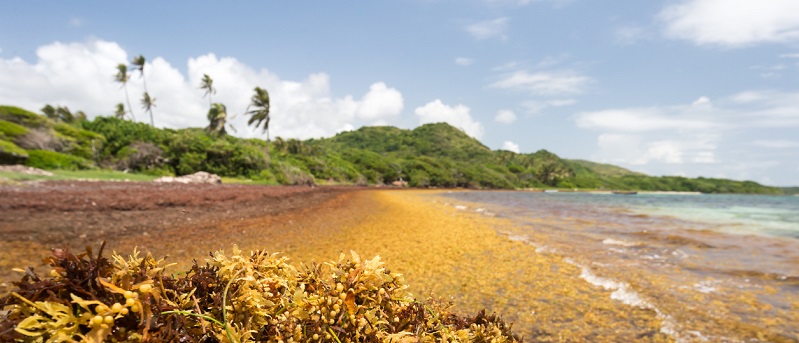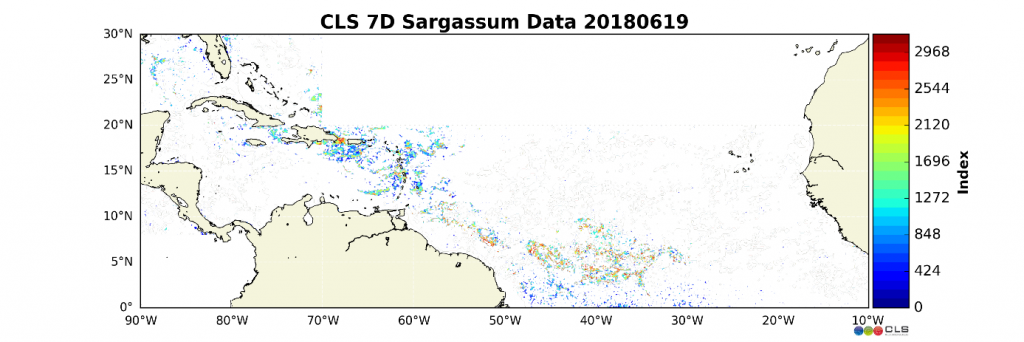CLS wins contract with ESA to develop an operational Sargassum service in the Caribbean
- 13 September 2018
- Category: Climate, Scientific projects and publications

 In 2018, the consortium CLS-NovaBlue Environment (NBE) has been awarded a project with the European Space Agency, ESA, to implement an innovative EO (Earth Observation) service to monitor floating Sargassum algae in the Caribbean area.
In 2018, the consortium CLS-NovaBlue Environment (NBE) has been awarded a project with the European Space Agency, ESA, to implement an innovative EO (Earth Observation) service to monitor floating Sargassum algae in the Caribbean area.
Detecting Sargassum
Since 2011, huge sargassum mass strandings have occurred in the wider Caribbean region threatening marine life, affecting human health, impacting tourism and proving to be a costly nuisance for fishing & aquaculture.
Predicting impact of Sargassum
While local governments work diligently to remove Sargassum from local beaches, CLS is working on a new service for monitoring Sargassum masses at sea, and forecasting when and where they will arrive onshore, so local actors can plan accordingly.
ESA Sargassum project: A synergy of optical sensors
The ESA project provides funding to develop a Sargassum monitoring service based on Earth Observation data. This service builds on CLS’s preliminary experience of detecting Sargassum in the Caribbean region via visual analysis of SAR (Synthetic Aperture radar) Sentinel-1 and optical Landsat-8 products. The ESA project will allow the integration of observations from Europe’s Copernicus Sentinel-2 and Sentinel-3 satellites, to complement the data from ocean color sensors MODIS-Aqua, MODIS-Terra for the calculation of a daily Sargassum Index. These sensors will make it possible for CLS to calculate an improved daily Sargassum Index (FAI) of 250m resolution, zooming down to 20m with Sentinel-2 products.
Towards operational forecasting:
In addition, the ESA project makes it possible for CLS to develop an operational, automatic forecasting system.
This includes:
- Setting up an innovative Sargassum drift modelling approach to forecast the position of detected rafts and eventually their likely landing areas along the coastline.
- Disseminating results through an operational web platform providing clear and easy to use information.
End-users centric
End-users will play a key role in the project. CLS and its partner Novablue Environment will engage with local communities in order to collect their requirements for the service and develop the user interface accordingly. End-users will then help in the assessment of the service by providing feedbacks on the service after a two-months trial.
An integrated CLS Offer for Sargassum Monitoring:
The Copernicus Sentinel constellation provides an unprecedented revisit and observation quality that enforce the transformation of CLS’ preliminary experiences into an operational service.
The integration of these data sources into a single operational service will be a state-of-the-art detection and monitoring service to help governments and local actors fight against this increasingly worrying issue.


